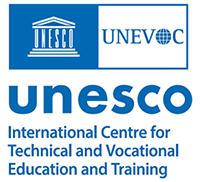
The UNESCO-UNEVOC International Centre: Who We Are | What We Do | Working With Us | Get in Touch
The UNEVOC Network: Learn About the Network | UNEVOC Network Directory
For Members: UNEVOC Centre Dashboard
Thematic Areas: Inclusion and Youth | Digital Transformation | Private Sector Engagement | SDGs and Greening TVET
Our Key Programmes & Projects: BILT: Bridging Innovation and Learning in TVET | Building TVET resilience | TVET Leadership Programme | WYSD: World Youth Skills Day
Past Activities: COVID-19 response | i-hubs project | TVET Global Forums | Virtual Conferences | YEM Knowledge Portal
Our Services & Resources: Publications | TVET Forum | TVET Country Profiles | TVETipedia Glossary | Innovative and Promising Practices | Toolkits for TVET Providers | Entrepreneurial Learning Guide
Events: Major TVET Events | UNEVOC Network News
(see also Skills mismatch, Qualification mismatch)
A broad definition of education-occupation mismatch is that educational qualifications of labor do not match those required for the job (Mahuteau, et al., 2015). There are two types of mismatches, vertical and horizontal mismatches. The vertical mismatch happens when the education level of the employee is not needed by the market, and the horizontal mismatch happens when the type or field of education or skills is inappropriate for the job (McGuinness et al., 2018).
 Source:
Source: